Goldfish - Carassius auratus auratus
Scientific name: Carassius auratus auratus
Common name: Goldfish
Family: Cyprinidae
Usual size in fish tanks: 16 - 20 cm (6.3 - 7.87 inch)
014
Recommended pH range: 6 - 8
Recommended water hardness: 4 - 18°N (71.43 - 321.43ppm)
0°C 32°F30°C 86°F
Recommended temperature range: 15 - 24 °C (59 - 75.2°F)
The way how these fish reproduce: Spawning
Where the species comes from: South Asia
Temperament to its own species: peaceful
Temperament toward other fish species: peaceful
Usual place in the tank: Bottom levels
Guidelines for Caring for Goldfish
Goldfish (Carassius auratus auratus) are large, active fish that require ample space to thrive. Each Goldfish needs at least 45 liters (12 gallons) of water, so a group of four requires an aquarium of 181 liters (48 gallons), and six would need a tank of 272 liters (72 gallons). A spacious environment not only supports their growth but also helps maintain stable water quality.
Never introduce Goldfish into an uncycled tank. While they are considered hardy, unstable water parameters can cause stress, weakening their immune system and leading to infections or disease. Weekly water changes of 10-15% are crucial to maintain a clean, healthy environment. Goldfish are a coldwater species and should not be kept in tropical setups; the water temperature should always remain below 24°C (75.2°F).
It’s advisable to avoid keeping fancy Goldfish with common varieties. Fancy Goldfish are less hardy and may become targets of bullying by their more robust counterparts, leading to stress and potential health issues.
Food and Feeding
Goldfish are omnivores that thrive on a diet low in protein and high in carbohydrates. To meet their nutritional needs, use specialized Goldfish flakes or pellets formulated for their dietary requirements. Feed them small portions twice daily, limiting the amount to what they can consume within two minutes. This prevents overfeeding, which can lead to digestive problems.
Supplement their diet with fresh foods such as shelled peas, blanched leafy vegetables, and occasional protein sources like bloodworms. These additions help diversify their diet and promote better health and coloration. Although Goldfish may always appear hungry, resist the urge to overfeed, as this can lead to obesity and water quality issues.
Origin
Goldfish originate from Asia and are closely related to the native brown carp. Through centuries of selective breeding, various gold and ornamental strains have been developed, leading to the wide range of Goldfish varieties seen today.
Sexing
Sexing Goldfish can be challenging outside the breeding season. During spawning, males often develop white spots, known as breeding tubercles, on their gill plates. Females may appear rounder when carrying eggs, but these differences can be subtle and are not always reliable indicators of sex.
Breeding
Goldfish breeding is generally easier in ponds but is also achievable in large aquariums. During the breeding season, the female lays sticky eggs on plants or other surfaces. These eggs typically hatch within 48-72 hours. The fry are very small at birth and initially retain a brown coloration, much like their wild ancestors. It may take up to 12 months for them to develop their adult colors.
For successful breeding, maintain optimal water conditions and provide ample hiding places for the fry. A separate breeding tank can be used to protect the eggs and fry from being eaten by adult fish. Feed the fry with specialized fry food or newly hatched brine shrimp to support their rapid growth.
Lifespan
Goldfish have a relatively long lifespan, ranging from 10-15 years under normal circumstances. However, with excellent care and an optimal environment, they can live up to 45 years. Regular maintenance, a balanced diet, and proper tank conditions are key to helping Goldfish reach their full lifespan.
Tank Setup and Environment
Goldfish require a well-maintained tank with plenty of swimming space. A minimum of 45 liters (12 gallons) per fish is recommended to accommodate their size and activity level. Goldfish produce a significant amount of waste, so a powerful filtration system is necessary to keep the water clean and reduce the risk of ammonia build-up.
Goldfish prefer a temperature range of 15-24°C (59-75.2°F) and a pH between 6 and 8. They do not require a heated tank, making them ideal for coldwater aquariums. Substrate and decorations should be smooth to prevent injury, as Goldfish are known to root around the tank bottom. Avoid sharp or rough objects that could damage their delicate fins.
While Goldfish can be kept with other coldwater species like some Danios and Minnows, ensure that tank mates are large enough to avoid being mistaken for food. Additionally, provide plants or ornaments that offer hiding places and enrich their environment.
Short Description
Goldfish are one of the most popular freshwater fish due to their variety, hardiness, and captivating behavior. Despite their reputation as easy-to-keep pets, they require specific care to thrive. Proper tank size, water quality, and diet are crucial for their well-being. They are peaceful and can be kept with other coldwater fish species that share similar water requirements. However, their large size and active nature necessitate a spacious tank with robust filtration. Goldfish can be a long-term commitment, offering many years of companionship when cared for correctly.

 Bala
Bala  Spotted
Spotted  Golden
Golden  Tinfoil
Tinfoil  Congo
Congo  Blue-barred
Blue-barred  African
African  Butterfly
Butterfly  Olivegreen
Olivegreen  Morse
Morse  Jerdon’s
Jerdon’s  Mosquito
Mosquito  Dwarf
Dwarf 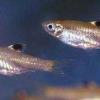 Eyespot
Eyespot  Penguin
Penguin  Siamese
Siamese  Koi
Koi  Pearl
Pearl  Glowlight
Glowlight  Crossbanded
Crossbanded 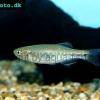 Yoma
Yoma  Orange
Orange 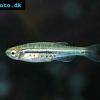 Dwarf
Dwarf  Zebra
Zebra  Rose
Rose  Red
Red  Arulius
Arulius  Tambraparni
Tambraparni  Fiveband
Fiveband  Bengal
Bengal 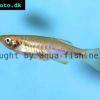 Tiger
Tiger  Malabar
Malabar  Queen
Queen  Hora
Hora  False
False  Redtail
Redtail  Rainbow
Rainbow  Flying
Flying  Garra
Garra  Black
Black 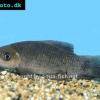 Purple
Purple  Burmese
Burmese  Dwarf
Dwarf  Isok
Isok  Rosy
Rosy 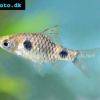 Two
Two 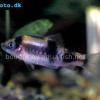 Melon
Melon 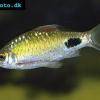 Black-spot
Black-spot  Golden
Golden  T-Barb
T-Barb  Ruby
Ruby  Checkered
Checkered  Rhomb
Rhomb  Gold
Gold  Tiger
Tiger  Cherry
Cherry  Brittan’s
Brittan’s 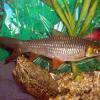 Greater
Greater  Long-band
Long-band  Twospot
Twospot  Reticulate
Reticulate  Cherry
Cherry  Denison
Denison  White
White  Lambchop
Lambchop  Harlequin
Harlequin